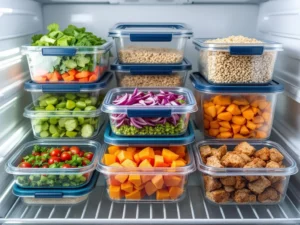
1. SPLASH THE CASH, STASH THE CARD
When asked if you wish to pay by cash or card, most consumers will say card. There appears to be more convenience with that little piece of plastic rather than fumbling around with bills and coins.
However, a 2010 study published in the Journal of Consumer Research tracked the grocery-shopping habits of 1,000 households over 6 months found that credit users not only bought more junk, they also spent an average of 59 to 78 percent more on their grocery bills.
Whereas shoppers who paid with cash bought fewer processed foods and more nutritious items than those who opted to use credit.
2. SNACK TO KEEP YOU ON TRACK
As everyone knows when you are hungry you want to eat, pretty straight forward logic, right? But did you know that hunger can have an adverse effect on your decision making skills?
Researchers at University College London discovered in a 2010 study that hungry participants made riskier gambling decisions than those who were satiated, leading the investigators to argue that the hormones your body releases when you’re hungry influence your ability to think rationally.
So before you go to fill up your shopping cart, you should probably fill up your belly first.
3. INSIST ON A LIST
Nowadays whenever you set out on a trip in your car you turn on your GPS. It makes the journey easier, more efficient and stops you from getting lost.
Well, today’s supermarkets are like an endless highway with many turns here and there. So, why not apply the same reasoning to your shopping. It’s all too easy to get lost with your intentions to buy healthy and spend only what you need.
Creating a grocery list helps you stay focused on what you want to buy, leaving you less susceptible to marketing tactics and impulse purchases. Keeping you on the road to a successful (shopping) trip.
4. HAVE A PEEK AT THE MIDWEEK
Most Americans tend to leave their shopping till the weekend as the last thing people want to do at the end of a working day is traipsing around a supermarket but according to Progressive Grocer, the voice of the retail food industry since 1922, you might be missing out.
They found that only 11 percent of Americans shop on Wednesdays, and on any given day, only 4 percent shop after 9:00 p.m. So if you’re shopping at, say, 9:00 p.m. on a Wednesday, you’re able to get in and out lickety-split.
It also means that you are less susceptible to impulse buying and as a cherry on top, not only do you not have to fight your way through the other 89 percent to get your weekly groceries, you get to have a long lie on a Saturday or Sunday morning.
5. DON’T BECOME A BASKETCASE
An interesting study published in the Journal of Marketing Research found that the strain of carrying a basket made shoppers more likely to just quickly grab impulse items, especially those at eye level and just throw them in their basket.
Once the basket has a bit of weight to it, consumers are less likely to stop to read the labels. So, next time you are on a trip down the aisles, stroll instead of stress.
6. READ BEFORE YOU FEED
All packaged foods and beverages in the supermarket (except alcohol) has an ingredients statement. These label slogans like “made with whole grain” or “reduced fat” can lure you into a false sense of security when it comes to making healthy choices.
But if your “reduced fat” food lists sugar as the first, second or the third ingredient, then it’s not exactly being honest with you. By law, the more of an ingredient a product contains according to weight, the higher it appears on that list.
In order to know exactly what you are buying, ignore the claims on the front label and move your attention to the back. The fewer the ingredients and the easier those ingredients are to pronounce, the better.
7. LIVE ON THE EDGE
When you enter the supermarket, instead of going straight down the middle, do a few laps around the outer walls. Most supermarkets in America are similarly organized.
Long-lasting boxed and bagged foods end up in the center aisles, while perishable, single-ingredient foods like fruits, vegetables, lean meats, and dairy live along the outer walls. The more time you spend working the perimeter, the healthier you’ll be.



























































